How To Resolve Issues With A Friend

No matter how much you put effort into all your relationships, there will come a time when challenges will arise that would lead to more significant problems. During these times, do not make a mistake of blaming yourself for the wrong things that will take place. Take note that having issues in any relationship or friendship is only typical since each person can have different thoughts and beliefs. In this article, we are going to provide you with a quick guide on how you can resolve issues with a friend.
Here are some of the ideas or things that you need to do in case you get into a fight or encounter a conflict with a close friend:
Stop The Blame Game
The first thing that you need to do is to be mature enough to prevent yourself from blaming the other person for whatever happened in your friendship. Remember that many factors could have contributed to all the issues that you have with each other. Take note that you are not going to heal if you keep on blaming your friend for the misunderstanding or fight.

Remember The Happy Times
It can be easy to get mad or furious at your friend during times when you feel that he has betrayed you or has done something that you dislike. Do not worry because what you are feeling is only normal. Keep in mind that you are merely reacting to the negative situation. However, it does not mean that you have to remain angry for a long period of time. Instead, find a way to remember the happy times that you shared together. These good memories can help a lot in fixing your problems.
Be Open Minded
Now is not a great time to keep on insisting about what you want to happen, even if you know that it can hurt or provide an inconvenience to your friend. The best thing to do is to have an open mind for whatever may come your way. Be flexible enough to handle all unexpected situations or scenarios that may arise because of the conflict. In so doing, you will find it a lot easier to accept anything that may be contrary to what you expect or look forward to.

Talk To Each Other
Communication is an essential ingredient for a fruitful friendship. Just because you are not on good terms with your friend does not mean that you will keep on ignoring each other. While it is best to give each other a time and space to think about the problems, it is still best to exert efforts in starting a heart-to-heart conversation. Let your beloved friend why you felt bad about what he did or said. Be transparent to him, so that he will have an idea of what you genuinely think about the friendship. It will inspire him to keep on doing better.
Resolving an issue with a friend does not have to be a complete struggle. You must attend to it as soon as possible so that you will not be late in saving the friendship.
How To Support A Student In Grief
Being a school teacher is a considerably selfless job. You prepare lessons almost every night; when you present it to the class, you can never be sure whether the students will listen to you or not. Although you don’t feel well, you force yourself to teach so that the latter won’t have to stop learning for a day. At times, you may even prioritize your profession over your personal life for the sake of your beloved students.

The thing is, problems don’t only affect grownups like you. Some of the learners might be living in a complex where flooding or massive fire can wipe all their family’s possessions away. Others experience losing a parent, a grandparent, or another close relative to a disease or an accident. Due to that, these kids’ minds may always be flying elsewhere, and they cannot perform well at school.
As their teacher, therefore, you should know how to support your students in grief.
Encourage Self-Expression
What makes it harder for some kids to move on is their lack of knowledge when it comes to expressing their emotions and thoughts. They have never gone through a significant loss until now. If the relatives are busy dealing with their grief too, the children who are assumed not to be aware of their surroundings are left to handle the emotions on their own. Hence, once they are in your class, you may introduce activities that will allow the grieving child to express how he or she feels.
Talk To Your Student Directly
“Everyone reacts differently to grief, and how one reacts has a great deal to do with what happened and whether they’ve dealt with it appropriately,” says Janeen Herskovitz, MA, LMHC. As mentioned also in Mom365.com, considering self-expression doesn’t seem to be working much, you are welcome to make the kid stay behind the class for a few minutes and speak about what happened to them. Mention what you know about losing someone or something dear, but try not to share many stories about your experiences. Instead, ensure that the student understands what death means and that its occurrence is not his or her fault.

Address Behavioral Changes
Since kids are usually at school, it is the teacher who sees any change in a student’s behavior, not the guardians. Grieving children use different mechanisms to cope with their feelings, after all. Some grow quieter than ever; others who used to be meek transform into troublemakers. “For grieving people, practicing self-compassion and self-care is often very difficult. All humans share the inclination to want to relieve discomfort when we find ourselves in it.” says Karla Helbert, LPC, E-RYT, C-IAYT.
When you notice the behavioral difference, you ought to address it immediately. You are like a second parent to your students; you, of all the other adults in school, should know when something’s wrong with them. Then, you may either coax the child to talk about their issues or refer him or her to a counselor.
Offer Additional Assistance
In case the child has trouble catching up with the class, you can offer to tutor him or her after school hours. You can do it at school, or go to the student’s house if he or she does not want the classmates to know about it. This extra step is easy to coordinate with their guardian and the school administrators, primarily when it will help the grieving kid a great lot.

Grief is not easy to deal with for anyone. It has a lasting effect on the people who experienced loss. “No one is born knowing how to cope with the wave of grief that follows the death of someone we love. As a psychotherapist who’s worked with many grievers, I know when faced with overwhelming grief, many people feel like they are alone in what they’re experiencing and can feel like they’re going crazy.” That is according to Debbie Augenthaler, LMHC, NCC. For the children who don’t know much about life still, it may be more difficult to overcome. Thus, teachers and parents should join forces to support them in these dire situations.
I Am A Special Education Teacher
Just like any regular educator aspiring for certification after a rigid education and training process, special education teachers will work with children and youth that possess disabilities. These teachers will assist students of various grade levels in varying ages, sex, and capabilities. There are special education programs in place for these kids to meet their needs and improve their learning.
How Teachers Can Respond To A Bullying Incident
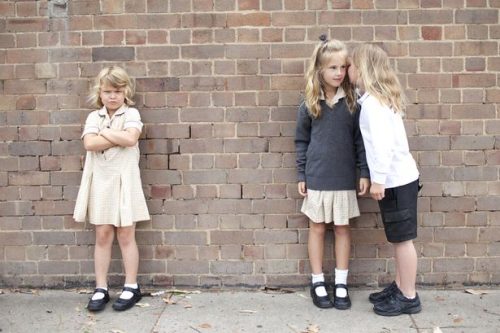
I’d like to say that news is crap and that some people are just out to get President Trump and find faults, but statistics don’t lie. Since his office, and possibly a result of misinterpretation, white Americans living in the country have become bolder with their hate and disgust for other races and ethnic groups living within. There are endless bullying on the streets, and racial discrimination has increased a hundredfold.
Continue reading “How Teachers Can Respond To A Bullying Incident”
Helping An English Language Learner Adjust In Class

You might be wondering about ELL and how they adjust to their new life in a new country, with a different language. ELL means English Language Learner, and some educators specialize in dealing with kids who immigrate to the US from other countries. What non-teachers don’t know is that some educators get nervous when they are assigned students that don’t speak the American-English language. It’s like teaching a parrot how to speak – they can talk, but they won’t understand the logic behind it.
Anyway, if you’re a teacher who happens to come across this particular dilemma, it might be helpful to remember these useful tips. After all, an ELL educator provided the suggestions (thank you Miss Deb Hanson!), and even if you’re not an ELL teacher, it can be your “just-in-case” thing.
Buddy Up System
The ELL child will need a “friend,” and that friend must be an English-speaking classmate who knows the language of the ELL and can function as a translator too. His or her buddy must be a good student and a role model at that who is patient, kind, understanding, and considerate. The buddy must be willing to help you and the ELL.
Actions, Gestures, And Drawings
You can’t talk to the child in English all the time. The buddy may be busy, and sometimes, you’d be left alone with your non-English speaking student. In times when you need to communicate, draw pictures, act out your thoughts, or make gestures of some sort so that the ELL will understand.
Google Search For Images
When you can’t act out what you mean, use Google search for images. It is more comfortable to impart knowledge and learning to an ELL if they have an idea of what it looks like in actual. Visual images can assist in learning, and they’d be excited about it. Young ones love gadgets and technology.
But then again, a word of caution. Not all images in Google are safe for kids to view. Screen the pictures first before showing to the ELL.
Minimize Usage Of Idioms
ELL won’t understand idioms like – can of worms, cat got your tongue, hold your horses, and the likes. It may confuse the child. If ever this happens, explain what the idiom means to avoid further bewilderment on their part.
Speak Gently And Plainly
Use simple words and be gentle. Avoid raising your voice and don’t rush.
Let The Student Speak English
ELL’s will try their best to speak English. If they make a mistake, don’t criticize and correct them, especially in front of other people. It may be natural for you to correct someone when they make a grammar mistake, but for this one, just hold on. For example – Sister goes work new clean house. You can respond by saying – Wow, that’s great! Your sister now works by cleaning houses?
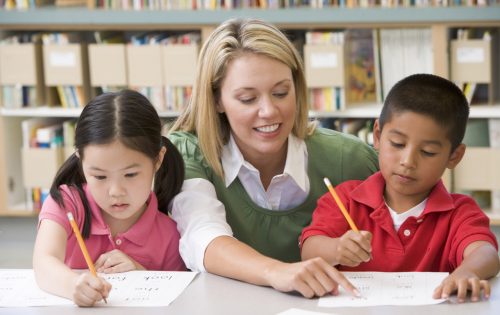
Writing Basics
If the student can’t speak English, it is highly likely that he or she has difficulty writing in English, as well. Just don’t rush your ELL. In time, he or she will be able to write. Do the I LIKE – I DON’T LIKE to exercise. Explain to the child that he or she has to write down the I LIKE things on the left side and the I DON’T LIKE things on the right side. For example, I LIKE TURKEY SANDWICH. I DON’T LIKE CHILI DOGS. In this way, the child will learn more English words by writing about their likes and dislikes.
Next on, the exercise can be a practice for using verbs, familiarizing with body parts, numbers, colors, clothing, sports, and more. For example, I CAN DANCE. I CAN’T SING. I CAN PLAY SOCCER. I CAN’T PLAY FOOTBALL. I HAVE SIX SISTERS. And so on.
Dictionary Use
It will be beneficial for you and the student to have a dictionary in the ELL’s native language. Keep it handy inside your classroom.
Lesson Modification
It is imperative to modify and simplify your lessons so that the ELL can easily understand it. Use Google images, pictures, and such tools for the student to visualize the word/phrase/sentence.
Be Positive Always
Teaching an ELL won’t be easy. In fact, it will be tough, and everything in your patience meter will be tested. Just stay positive and be a teacher who wants to help. A smile can go a long way, and your body language says it all. Be welcoming, and your student will never forget you.
What To Do If Your Student Has Dyslexia
An Overview Of Dyslexia
A significant percentage of students in the United Kingdom (and most probably in other Western countries as well) have been diagnosed with this specific learning condition called dyslexia. Dyslexia, as defined medically, is a condition wherein a person has difficulties in reading and interpreting printed characters. A young person with dyslexia may see the printed page, but the characters seem to move as they see it with their eyes. With this, the child’s performance at school will be affected, and most of them who don’t get diagnosed are passed off as stupid or unintelligent just because of this condition.
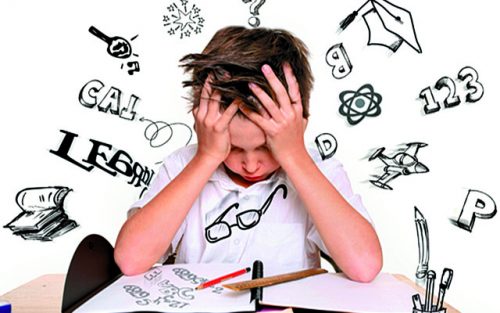
Supporting Students With Autism Spectrum Disorder

Despite their condition, students with Autism Spectrum Disorder are now encouraged to participate in the traditional educational mainstream together with ASD-free kids. Autism Spectrum Disorder is a prevalent condition in kids these days. Behavioral and social interaction issues characterize it. Thus, having them in class can be a real challenge for teachers who have no training or knowledge in dealing ASD kids.
But since the educational system is already welcoming pupils with the condition in a regular setup, teachers might as well equip themselves on how to deal with such students.
How Autism Affects Student Life
A traditional classroom is a social place where students can interact and learn from each other. It is a place where students develop their social-emotional skills, but for a student with ASD, the setting could lead to heightened depression, stress and anxiety. As elaborated by Stormi Pulver White, PsyD, “Many teens with autism – boys and girls alike – don’t pay close attention to the social examples and cues of their classmates and peers. As a result, many need help understanding that these behaviors are important.”
With that said, problems may arise regarding behavior and academic performance as well. It will become a challenge for teachers as they may require additional learning methods and even social support. Furthermore, since there is a strong connection between social and emotional competence with academic performance, it is expected that issues will arise for students with special needs or with ASD.
The education system in each state and even countries worldwide are then challenged to address this phenomenon. It is vital to come up with strategies to balance the needs of students with or without ASD.
Misinformation Around Inclusion
Many assume that quality education is obtainable through classroom learning. However, for students with ASD, this notion doesn’t exactly follow to the dot. What is the definition of “inclusion” anyway? The school has to address this for the child with ASD to experience quality learning without impairing his emotional health. But John Cutrone, LMHC, MCAP, CAS said, “Being diagnosed with Autism does not have not to impact you negatively. People with Autism can live fulfilling and meaningful lives. It is about learning the tools and skills that can help lead to success.”
The usual solution is to remove the concerned ASD student for some time from mainstream schools if their condition deters them from coping with traditional style learning. This act will help lessen the stress, anxiety, and pressure on the student. It will also help him adjust if the school he is under will cater to his specific needs. Once everything is already on track, he can rejoin traditional schools provided he can manage the settings. Otherwise, welcome the student and put in all the effort.
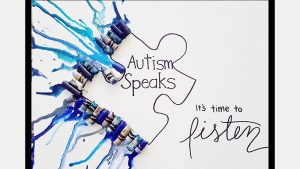
Suggestions for Teachers
In classroom interventions for autism, teachers should help their students with ASD on how to overcome the sudden transition by providing moral support and whatever else the kids need.
Some students with ASD also request usage of gadgets like laptops and tablets in doing their schoolwork. Note that students with ASD have delays with their fine motor skills. Thus, using these gadgets can help them catch up with the group concerning lessons and schoolwork.
Copies of the lesson instructions, notes and activities verbally given by the teachers in class can help ASD kids. It will assist them to get a good grasp of the lessons as they go along. They need it in text or written down.
Taking photos of the notes and instructions written on the board are allowed for ASD students, if possible.
A quiet place for students with ASD to complete their school activities and assignments must be set up.
Supporting Students With ASD
Fund Allocation. Having ample funds and spending it on the proper resource or tool will enable schools in teaching ASD kids efficiently. They must also hire specialized staff who can help teachers create learning approaches for students with ASD.
Specialized Educator Training. Training will help teachers understand the condition and strategize methods to reach out to their students with ASD.
“There is no cure for autism, nor is there one single treatment for autism spectrum disorders. But there are ways to help minimize the symptoms of autism and to maximize learning.” Karla Helbert, LPC, E-RYT, C-IAYT said. Educating teachers on ASD as a developmental condition and strategies on how to deal with their students having such disorder is the best solution. In time, students with ASD can go to school without any problems just like non-ASD kids.
Important Facts On Special Education
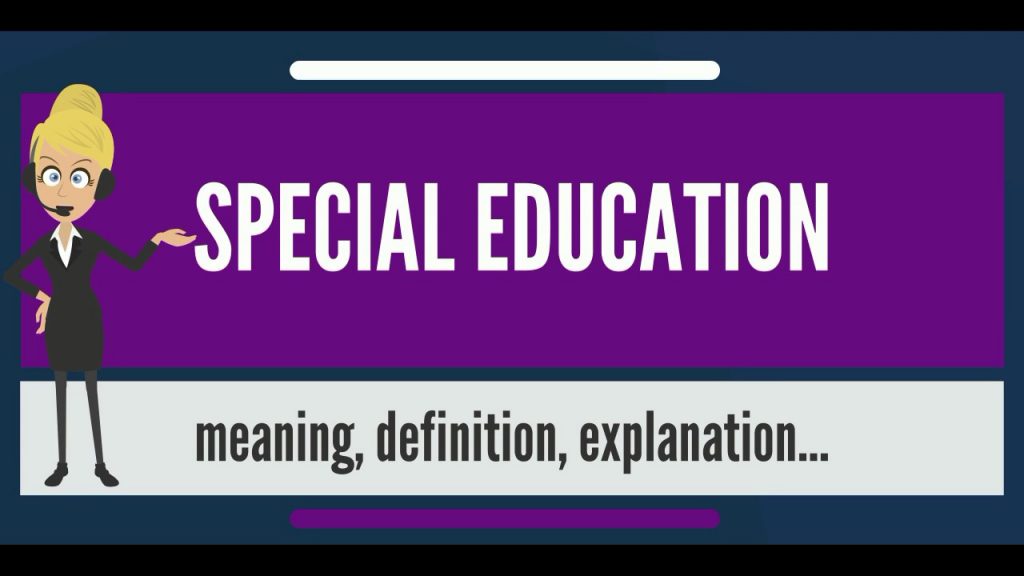
Define Special Education
Some children have delays regarding physical development, mental aspect, social traits, and emotional health. With this, it is best for them to go to a school that can cater to their capabilities and enhances it or those who utilize classroom interventions for autism. Some of them can function in a traditional school system, but it will be very tough on them. Others won’t be able to function well at all. They need a specialized educational institution for their learning needs.
